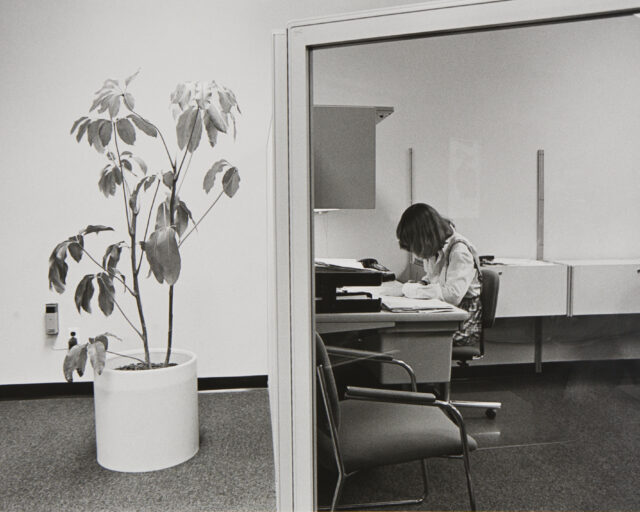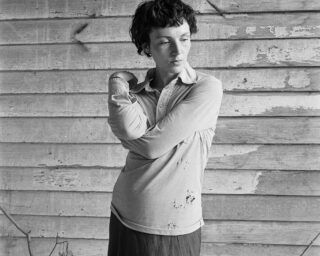America’s Destiny in Pictures
What is the role of the photographer in our new political order? Seven visionaries respond.

Courtesy the artist
Alejandro Cartagena
For most of the last century, the United States of America, at least as we have perceived it from Latin America, followed a formula to avoid (or to hide) blatantly corrupt governments. Was it the way the law seemed to be enforced? Was it the obscene amount of money that supposedly made things better? Was it just propaganda that portrayed the United States as a place to realize your dreams? I don’t really know, but it worked—until now. Somehow, as we say here in Mexico, se les viró la tortilla—the tortilla got flipped. It seems like a scene from a bad Hollywood movie. In Mexico we turn on our laptops with pirate IP addresses to watch American TV to contemplate the current state of things. Are we Latin Americans surprised of what is happening in the United States? I have to say, not that much. From here, the “American destiny” seems to be exactly that of the rest of the American continent: daily doses of in-your-face corrupt politicians, demagoguery, lies, and nepotism.
In a recent trip to San Francisco, after the travel ban was enforced, I found myself a bit scared to go to the United States. Just crazy. I went ahead and erased all social media from my phone and my search history from my laptop. I was stepping into a new type of war zone where anything could happen. I made a point to myself only to watch Fox News–type media. I wanted to see America becoming great again. In Latin America we see this happen all the time. I wanted to get a feel for the formula being used to create this “better” world. Such propaganda made me think of the urgency I feel here in Mexico to photograph the urban sprawl in the outskirts of most Mexican cities, or the tough travel and working conditions of Mexican day labors in Northeastern Mexico. It is through these images that we as photographers commit to visualize the lives of those who lack the power to represent themselves.
If the official story of the United States is now going to be written by the people in power, there is a pressing need to have photographers, artists, and writers create alternative story lines that can balance out those coming out from the regime. Photography can empower introspection, giving more options to the American people. Options, as we have been told, create possibilities of a better future. If the “American destiny” wants an opportunity to fulfill itself in a “good way,” it’s time to start looking inwards to the mess the country is in and see what you can say about it, even if Mr. T deems it fake news.
Alejandro Cartagena is a photographer based in Monterrey, Mexico.
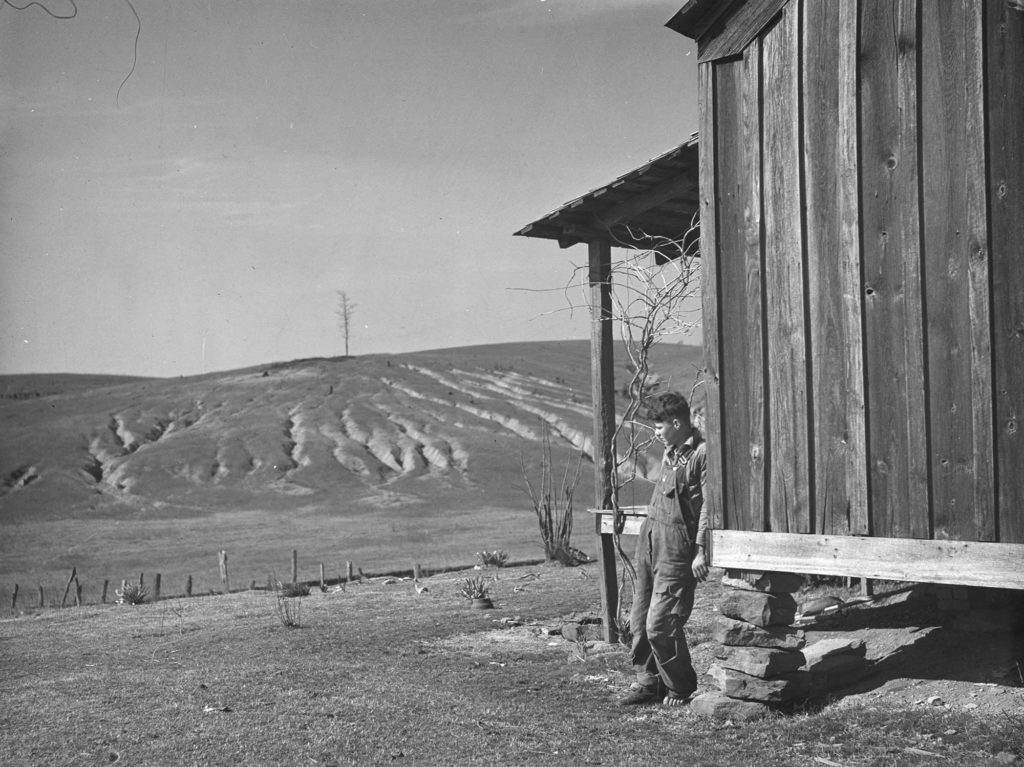
Library of Congress Prints & Photographs Division
Nancy Isenberg
I discovered a long history of seeing the poor through the metaphors of wasteland, vagrancy, idleness, inferior breeding, and impoverished minds while researching my book White Trash: The 400-Year Untold History of Class in America (2016). The oldest image, The Mapp of Lubberland or the Ile of Lazye (ca. 1670), portrays an imaginary territory where sloth is contagious and men are drained of the will to work. In the 1930s, when 40 percent of the American population were landless tenant farmers, WPA photographer Arthur Rothstein captured what Secretary of Agriculture Henry Wallace called “human erosion.” A hapless man is dwarfed before a barren landscape scarred with massive gullies. At the same time, the gully became the symbol of downward mobility. Land was never just a source of wealth, but the measure of civic identity and good breeding. Hence, people who lived on bad land—hillbillies and rednecks (people associated with swamps)—were dismissed as degenerate stock.
This is why the “eugenics mania” of the early twentieth century targeted poor white women as perfect specimens of white trash and perfect subjects of state-mandated sterilization. Nor did class language disappear. Orval Faubus, a controversial governor of Arkansas, embodied the conflicted message of social mobility. He was a poor country boy who rose to become one of the political elite. And yet, in the 1957 Life magazine spread about his rise, one photograph featured Taylor Thornberry, his cross-eyed kin in overalls. This one image made its point with perfect clarity: inheritance and pedigree mattered greatly, even in modern America. The country boy could never really escape his inferior roots.
“American destiny” has never been about the entire population, only those considered worthy enough of inheriting our country’s wealth and benefits. Planters in the antebellum South compared themselves to fine stallions, while eugenicists heralding IQ tests celebrated the rise of an aristogenic class of educated professionals. Sadly, even today we have not escaped this unappealing legacy. The best predictor of success in the United States remains the wealth and privilege passed down from ancestors/parents to children. Photography can play a valuable role in unmasking the truth behind the myth that all are created equal.
Nancy Isenberg is the T. Harry Williams Professor of History at Louisiana State University.
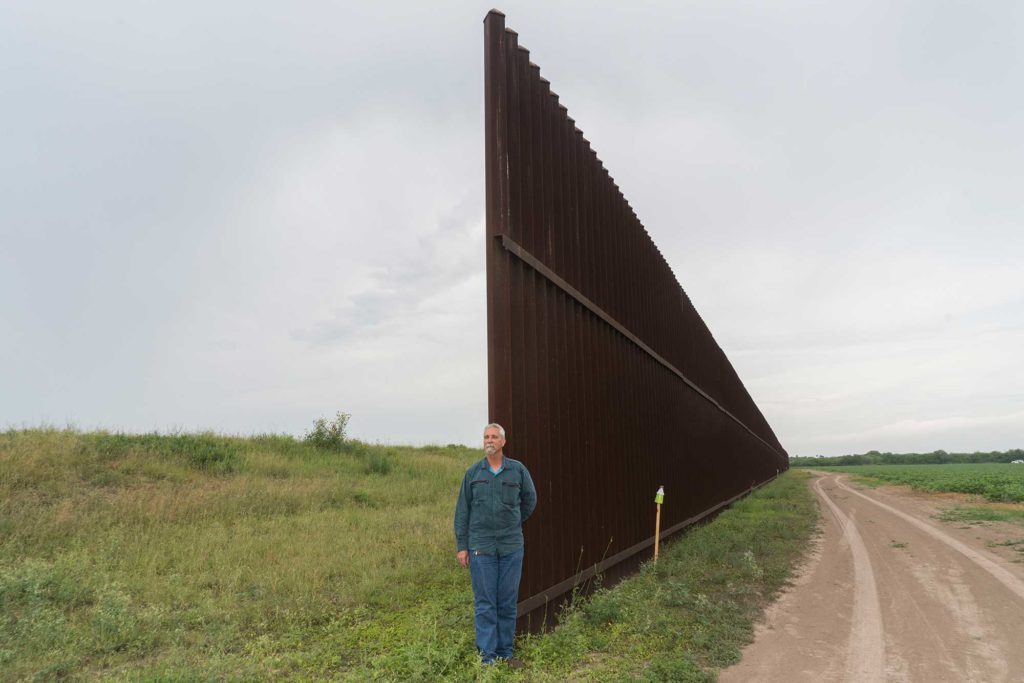
© the artist/Magnum Photos
Fred Ritchin
We now live in the world of “post-truth” and “alternative facts,” where much of the media is characterized by the U.S. administration as the “opposition party.” At its best the media, and especially photography, have served as credible witnesses to contemporary events, able to focus large segments of society on issues of importance.
Given, however, the diminished credibility of all news media today, what is a photographer of the journalistic persuasion to do? First of all, it seems that the medium needs to be reinvented. Only in photojournalism could someone working today in the style of the 1930s be awarded the World Press Photo award for the photograph of the year (see last year’s Robert Capa-like winner by Warren Richardson, for example). Documentarians and photojournalists must learn from the strategies used by artists, cinematographers, novelists, and poets—“f/8 and be there” is hardly convincing as a strategy when some four billion people are doing the same thing, often calling into question the credibility of all imagery with uncertain standards of fairness. Curators and editors must learn to practice a sophisticated form of metaphotography to make sense of the trillions of photographs and videos online so that the vast amounts of knowledge stored within them can be intelligently shared. And, most of all, everyone must stop communicating only with the groups with which they already agree. The wall that Trump is threatening to build between Mexico and the United States has already been put in place separating many of the denizens of the red states and those in the blue, between those living in rural and urban America; we live in different conceptual universes.
As for the U.S. economy, photographers have hardly begun to look at the systems that underlie much of what is happening, from automation to imports to the disintegration of labor unions, to the ways in which the very rich manipulate the political and economic systems. We need a “USA, Inc.” project, a more extensive version of Philip Jones Griffiths’s 1971 Vietnam Inc., to begin to understand our societal failures and potential. Right now the great hoax is that the Internet makes all things knowable; it certainly does not.
Fred Ritchin is Dean of the School at the International Center of Photography and author of the Aperture book Bending the Frame: Photojournalism, Documentary, and the Citizen (2013).

Courtesy the Rogovin Collection
Julian Stallabrass
In 1993, Sebastião Salgado published his monumental book, Workers, an elegiac testimony to a global world of manual labor that he saw passing away amid the tide of automation. With an economist’s eye, Salgado teased out in stories and text the structural relations of exploitation between corporation, boss, overseer, and worker, between consumers and producers, and between the global north and south. Behind the detail of the individual stories that made up the book, Salgado glimpsed a destiny in the form of an ending, and mourned two endangered activities: manual labor and humanist photography.
What would a photographic project about work’s destiny look like now? It would face the difficulty that among those enslaved to tailoring their human capital to corporate agendas, “work” has permeated everything, even and especially holidays, and involves regular self-display. Salgado’s project, as is true of other humanist photographers, like Milton Rogovin, was in good part about revealing what was hidden at a time of deep political reaction that sought to bury laborers in invisibility. While much remains actively concealed, one can imagine a project now taking the form of an analytical collage of found fragments, cast in the bright colors and cosmetic filters of digital self-advertisement.
Is there an American destiny in this work, which diverts the utopia of self-fulfillment to serving commercial conformity? The word’s grandeur, like that of fate, may momentarily swell the Trumpian chest, and seem apt to describe an empire in decline, with all its attendant dangers. Yet it is paradoxical when applied to the empire of neoliberalism. Destiny suggests that a destination is held in sight, in the way that the eyes of socialist-realist heroes were fixed upon the coming dawn. Yet neoliberalism outlawed such dreams: there can be no direction except that of the untrammeled market, which is nothing other than the rule of contingency. Even in neoliberalism’s present frailty, no future is glimpsed—only a return to an imagined past, oddly similar to Salgado’s Workers, in which brown skins are swapped for white and women for men, in a strange and barely plausible oil- and coal-begrimed nostalgia.
All cultural workers, including those who work with photography, should be building counter-narratives and subjecting “work,” “destiny,” and especially “America” to corrosive analysis. They could also point towards positive liberations from work dissolve the idea of America in its web of global social relations, and wrench the trajectory of capital away from the only destination it appears to offer: catastrophe.
Julian Stallabrass is Professor of Modern and Contemporary Art at The Courtauld Institute of Art, London.

Courtesy Define American
Jose Antonio Vargas
Politics used to begin and end with the relative passiveness of red and blue lawn signs. Now weaponized words, heavy with histories of derogating others — “illegal,” “alien,” “tranny,” “gang-banger,” and “terrorist” (to describe Muslims exclusively) — have been accepted in the national discourse, all in the name of making our country “Great.”
As Toni Morrison said, “The systematic looting of language can be recognized by the tendency of its users to forgo its nuanced, complex, midwifery properties for menace and subjugation.”
In a world where the news has become a frontline of the American culture war, we must understand and honor the power of language if we are to live free of this menace. The words we choose to use do more than represent an idea. They represent who we are: our values, opinions, and the level of our love and empathy for others.
How can we communicate with one another when we are not speaking the same language? Where words fail us in this national crisis of communication, images transcend. This series of photos by Michael Conti entitled Great! (2017) is part of an ongoing effort by Define American to change the way we talk about our fellow Americans, to see each other for our stories, our work, our full lives.
An image can convey how a Wisconsin potato planter might love his undocumented siblings in the New Jersey tomato fields. How an embattled police officer might love the Black and Brown people they are sworn to protect. How a young immigrant, who will be part of 88 percent of our country’s population growth in the future, can feel love for a generation of older Americans who have seen their ways of life change at an unprecedented, exponential speed.
It will take radical empathy for the mainstream to trust the experiences of all those outside as authentic—and to give them the space to speak. It will take radical empathy for people of color to not quickly call White people “racist,” personalizing systemic racism. In order to understand one another, we must see one another first.
Jose Antonio Vargas is a journalist, filmmaker, and CEO of Define American and #EmergingUS.

© the artist/Magnum Photos
Susan Meiselas
The Rochester chapter of the Magnum Photos project “Postcards from America” led me to the home of Hickey Freeman, one of the oldest and last surviving manufacturers in the nation. For more than one hundred years, the company has drawn on the finest tailors, first from Eastern Europe, then from Italy and Turkey, and now the world. The company has a long-standing history of supporting immigrant workers, through both seeking out master tailors and, more commonly, providing new workers with the skills to do the job.
Hickey Freeman is an institution that has weathered the near collapse of domestic American industry. In 1899, when the company was founded, nearly all clothing purchased by Americans was made in the United States; today it is just 2 percent. On a grand scale, the company has seen each new wave of U.S. immigrants come through its doors. Today, Hickey Freeman is the only apparel company left in Rochester, which was once a booming textile and apparel production center of America. It employs workers from nearly forty countries, all in one factory. These immigrants are the lifeblood of the company—each so specialized in a task that collectively it takes 160 actions to make a jacket.
Another project addressing the current state of American manufacturing took me just beyond the boundaries of downtown Milwaukee. In the surrounding suburbs, I drove around past huge anonymous boxes, manicured so as not to expose the mystery of what was being made inside. Few gave permission to come inside, but those who did offered a tour which often revealed an object whose function was nearly impossible to identify and too abstract in purpose for an outside observer’s eye. The pieces were remarkably odd. I couldn’t tell what a small piece or larger futuristic structure would become.
Unlike Hickey Freeman, the vast majority of the workers in Milwaukee were American, a striking number of them women. They all seemed removed from the objects they were responsible for creating. Their work environment is more insular. They too focus on a single piece with great care, but perhaps with less connection to the larger whole object they are contributing to, or to where it might in fact end up.
What is “Made in America,” and who is making it? This is what I am now just beginning to explore. Can the impact of globalization be turned around, especially in mid-America? This is the great question. There is the reality of broken lives and now new promises. Time will tell what the future holds for both.
Susan Meiselas is a photographer and member of Magnum Photos.
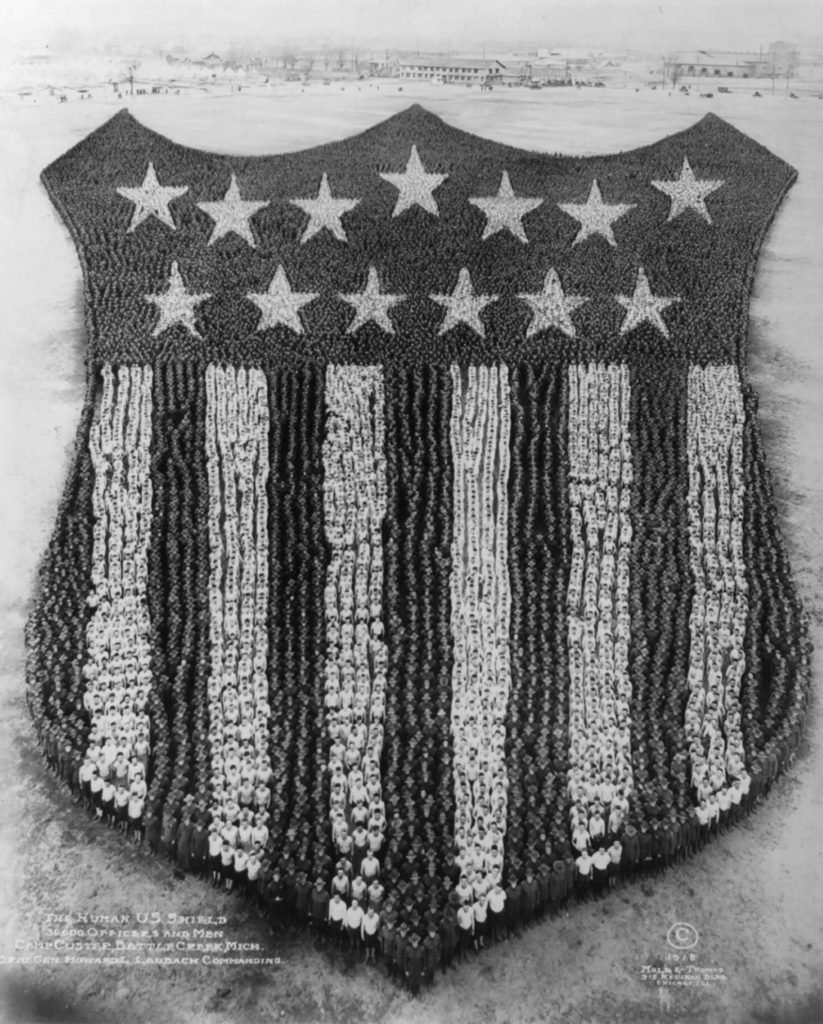
Library of Congress Prints & Photographs Division
Sarah Lewis
We often consider measuring a life by data—information gleaned from the census, statistics from social science metrics, demography—who lives where—and analyzing health disparities. We measure a life through mortality rates or earning power—the value of our labor. During times of crisis we often realize the power of images to measure progress in American life.
This is a concept that Frederick Douglass spoke about during the Civil War in a speech entitled “Pictures and Progress.” Douglass —whose work is, apparently, being recognized “more and more,” and here perhaps I should emphasize that he left us in 1895—understood that photography was both an artistic medium and a tool, an instrument of measurement that would help expand our concept of citizenship. When Douglass gave this speech, it was also the dawn of the photographic age. If combat might end complete sectional disunion, America’s progress would require encounters with pictures because of the images they conjure in one’s imagination, he argued. Douglass—the most photographed American man in the nineteenth century—was making a case for the epiphanic power of images to shift our vision of the world.
Much of the work by image makers of the last century has expanded the notion of citizenship by altering the living portrait of the nation. One could say that we are refuting the living portrait of the country laid out in 1918 by photographer Arthur Mole. In that year, Mole gathered 10,000 men from the army to create a portrait of American destiny through the image of Woodrow Wilson. On the grounds of Camp Sherman in Ohio, Mole turned human beings into dots, a collective into a single, undistorted image, with rigid exactitude. To take the photograph, Mole created towers nearly eighty feet high and took a week to plan, placing lace edging on the ground to mark where each person would stand. The image depended on Mole’s having bi-level vision: he paid close attention to individuals to create a sweeping, collective image. The dehumanizing exactitude with which Mole made individuals conform to the image of the national figurehead—some men fainted during the shoot—hints at the fragility of the idea of national identity. Mole created this among many other collective portraits—with sitters ranging from 10,000 to 30,000—during a time when the country was striving, struggling, and rioting over attempts to impose a reductive face on U.S. nationalism.
The men in Mole’s portrait of 10,000 Americans are exclusively white. If it can be argued that one effect of the American Civil War “was to replace the sentiment of section with the sentiment of nation,” as Louis Menand writes in The Metaphysical Club (2001), then one effect of America’s involvement in World War I was to expose the nation’s attempts to conflate the concept of “nation” with racial whiteness.
Perhaps it is no coincidence that the idea of America’s “manifest destiny”—the idea of expectant hope about the providence of America’s westward expansion—coincides with the birth of photography in the mid-nineteenth century. America at this time had a limited visual template for citizenship. The initial idea of American citizenship, after all, had been connected to whiteness and the ability to own property. The ways in which we’ve since expanded our concept of citizenship, of progress, and of destiny would become deeply tied to the new medium. For, as Douglass knew, it is during moments of encounter in the crucible of crisis that we see the role that pictures play in auguring American destiny.
Sarah Lewis, guest editor of Aperture’s “Vision & Justice” issue, is an Assistant Professor at Harvard University in the Departments of History of Art & Architecture and African and African American Studies.
Read more from Aperture Issue 226, “American Destiny,” or subscribe to Aperture and never miss an issue.










